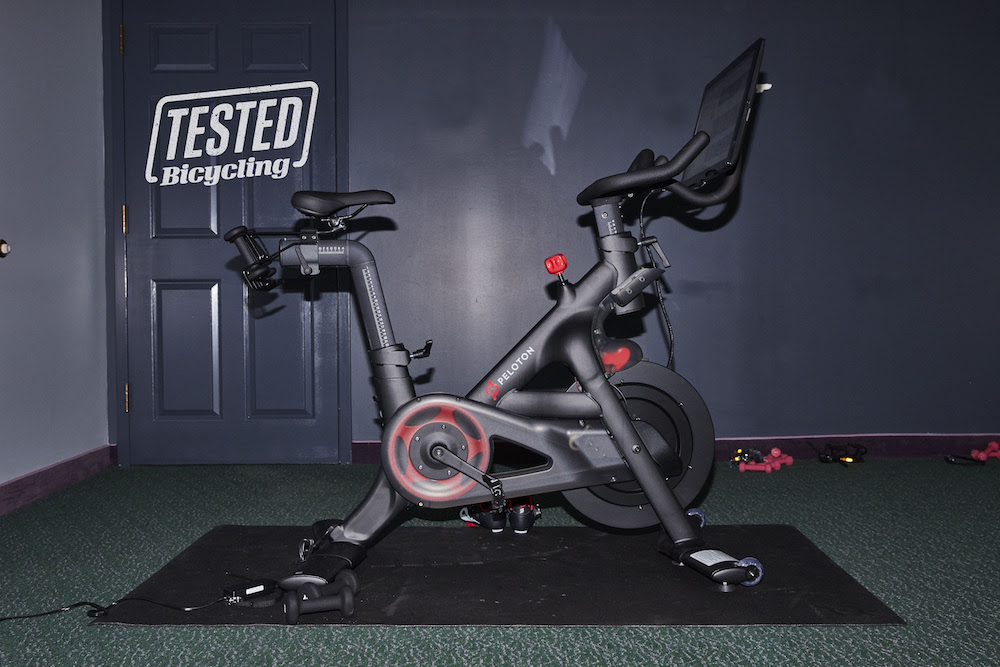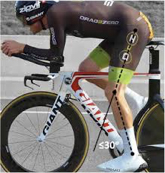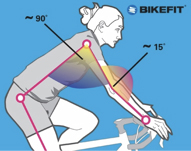How to achieve your best results and to avoid injury
By Dan Boyd @theironphysio
Cycling is one of the best exercises to support your physical and mental health. It is essential to keep exercising to maintain a strong immune system and a healthy heart!
Dan Boyd our expert cycling physio shares his thoughts on how to optimise your set up. But how do you set up the bike to avoid injury and maximise your workout?
One of the most common things that I see (and change) on a bike fit is saddle height. The widely accepted knee bend range is between 35° and 45°, measurement in the ‘BDC’ (Bottom Dead Centre) position (6 o’clock) on your peddle stroke.
Think of a bicep curl – you are so much stronger in your ‘mid-range’ rather than when your arm is fully straight. It makes perfect sense for cadence (number of revolutions of the crank per minute) and reduces the size of your aerodynamic silhouette!
It will increase your power, your cadence and reduces aero-drag, win, win, win!
In clinic we measure this digitally with computer aided movement analysis but essentially keep the knee bend at 35° and 45°. This is a great start for any cyclist fitting their own bike.
As a rough guide, just eye a little less than 45 degrees at your BDC (6 o’clock position). My general advice would be the saddle will be a little lower than you think! If you have a protractor or a goniometer get someone to measure you – make sure that you remain in your cycling position for this. Another method would be to video yourself and measure the range by pausing the video.
Next on my shortlist would be ‘KOPS’ position (Knee Over Pedal Spindle), which should be measured at the 3 o’clock position on your pedal rotation. It can be easily plumb lined with something heavy and a piece of string. (Again rely on a friend or pause a video of your cycling position.) This position is altered by moving ‘fore’ and ‘aft’ on the rails of your saddle. The plumb line should drop from the edge of your knee dropping down through your pedal spindle.
Arms would be my next focus. It is essential that you do not overuse your arm muscles to hold on and grip too hard. Isometric i.e. static muscle contractions are often overused to support your body weight. Relaxing your arms will allow your blood to travel to your legs instead (where you need it more), this will affect your performance on harder efforts and longer cycles.
Almost more important a nice relaxed arm position prevents one of the most common complaints… neck pain. You should have between a 15° and 25° bend in the arms – also you should have the hoods of the handle bars supporting your wrist in as close to neutral position as possible – it should be comfortable!
At Complete, we will use dynamometry to measure your muscle groups involved in cycling, analysing ratios of strength and parity relative to cycling performance. We also utilise Gebiomized ® software and video analysis to fit cyclists in the most accurate and evidence based way to optimise performance and prevent pain and injury.
To make an appointment please call 020 7482 3875 or email info@comple-physio.co.uk.
Happy Cycling!
Don’t let pain hold you back, book now!





